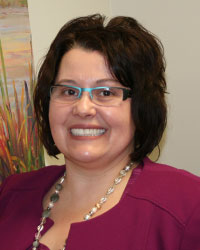Curb your cravings
Curbing cravings is challenging, but a new U of S program is here to help.
By HenryTye GlazebrookThe Wellness Resources and Student Health Services are introducing a new tool to help students, staff and faculty manage food in a healthy way through behavioural changes.
The class, dubbed Craving Change, is a six-week workshop that aims to take participants beyond typical restrictive diets and show them the reasons behind their eating habits.

"It's not your typical diet," said Raelin Bliss, senior wellness specialist in human resources. "There are no rules or restrictions. It's more to understand your relationship with food and why you eat the way you do. It brings awareness as to what your own personal triggers are to eating."
The Craving Change workshop hones in on four key areas in order to promote a healthy lifestyle: better understanding why changing eating behaviours can be difficult; self-evaluation through tools such as work books; instructions on how to best implement planned changes; and gaining the tools to maintain these adjustments long-term.
Though the class is definitely meant to inspire the kind of eating habits that might lead to weight loss, Bliss said that it could also prove useful to those who are celiac, diabetic or live with other similar food-related chronic diseases.
The idea, Bliss explained, is to address eating from a cognitive behavioural approach and encourage participants to more fully understand exactly how current eating habits developed.
"In the past we've had weight loss programs or group supports, and that's more about measuring your food and things like that. This workshop brings a different perspective—an understanding how to make healthy choices," Bliss said.
"Never before have we sat down on campus and thought about the psychology of why we eat the way we eat."
Though the workshop has been available to students previously, this year's Jan. 26 start date marked the first time that staff and faculty have been able to participate as well.
The workshop has proved quite popular already, with its initial 18 available slots filling nearly immediately and another 18 people placed on a waiting list. As a result, plans are underway for a second.
Bliss believes the demand is due to the universal appeal of learning to better manage food and live a healthy life.
"Health is important for everyone. Food is something that we consume every day, and it directly impacts peoples' health, their energy, their ability to focus."
Tips for healthy eating
Registered dietician Cathy Langdon leads the Craving Change workshops. Although the program is already full, Langdon had a number of helpful healthy eating tips for everyone to live by.
- Focus on one small goal at a time
Small goals make it easier to succeed. Achieving small, manageable goals will give you confidence to keep moving forward with your healthy eating plans. - Losing weight is not a goal
Weight loss is a wish, unless you have an action plan. You need to determine what your action plan is to lose weight or eat healthier. Make it concrete and actionable. - The occasional slip-up is not the end of the world
Slip-ups are quite common. Look at your slip-ups as a learning opportunity that can help you next time. - We eat with our eyes, not our stomachs
Most people decide they have had enough to eat when their plate is empty, not when their stomachs say they are full. Pay attention to your internal feelings of hunger and fullness to gauge your appetite. - Keep a food journal
This is a tried and true method for keeping you accountable for when and what you are eating. Identifying patterns of eating behaviour is a helpful step towards changing food habits for the better.

